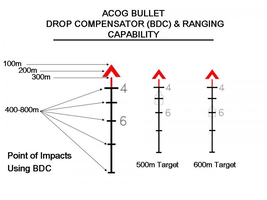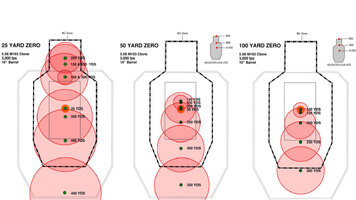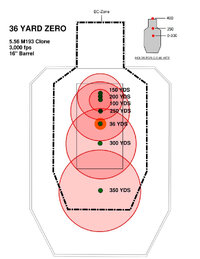If you want efficient answers to your questions, form them better. You asked about using a battle zero on an optic that's designed for a 100 yd zero. It doesn't require "4 paragraphs" to explain that you're (for some unknown reason in 2023) scared of batteries.
there is little in the world more durable than an etched duplex reticle in a fixed magnification optic.
in fact, that's all an ACOG is
except they put a bunch of time/effort into sorting out an estimated bullet drop trajectory based on an assumed cartridge and barrel pairing. (for a client with controlled ammo and barrel lengths)
You're new. You're building a LARP carbine. You don't know what you don't know. That's awesome. Learning where we are is the first start on any journey.
If you want simple, use a simple reticle. if you're going to spend the money on something fancy, you're wating money if you don't use it how it's intended.
Every cartridge/barrel pairing will be different. For any given combo, there is a MPBR BZO that you could develop for your use.
See? one sentence. Boom.
Now...why do you think you need something "as durable as an ACOG"?
More accurately, is your lifestyle really so High Speed Low Drag that you expect to be in such austere conditions that you'll be forced to use your optic as a hammer
for years on end without the option to hit a resupply and replace the battery? If you are planning to zero the rifle and bury it for so long the battery may have died, I've got two pieces of bad news: 1) Tritium dies, too; 2) that means you haven't trained with that rifle.
If not, even a Holosun will go a year without a battery change, and a spare battery can be stored in the pistol grip of your rifle. If you change the battery every time you change the clock, you'll
never have a dead battery. And if you train with it regularly, you won't find yourself worrying if your battery is still good.
Better still, if you train with it regularly, you can test countless configurations and zeroes, to find the one that actually works for you, without drawing the laughing attention of guys like
@cams who have actually been there and done that,
with irons.
[edit]
cribbed from that other thread, here's another visual to help you understand what's going on:
(NB: your 36 yd zero really is the 300 yd zero)


![ROFL [rofl] [rofl]](/xen/styles/default/xenforo/smilies.vb/013.gif)




